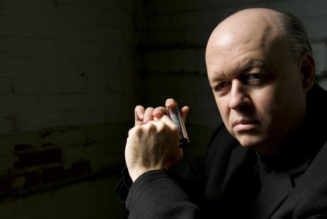
In the corporate world these days, few slogans have become more hackneyed than “doing well by doing good.” As I’ve written in the past, there’s plenty of room to doubt whether classical music’s new titans of diversity—with their policing of orchestra repertoire, end-runs around the blind audition process, or “equity” trainings—are doing good. But a quick look through some of those organizations’ publicly available tax records leaves no doubt that they are doing well indeed.
Consider the Sphinx Organization, a Detroit-based nonprofit dedicated to “transforming lives through the power of diversity in the arts.” Its less controversial initiatives include diversity-focused music academies for children, a 20-member professional touring chamber orchestra (the Sphinx Virtuosi), and two resident string quartets. Rather more controversially, Sphinx hosts an annual young artist competition open only to “Black and Latinx” musicians. And then there’s Sphinx’s National Alliance for Audition Support, which not only offers special mentorship to minority musicians as they prepare for professional auditions but also enters into agreements with orchestras around the country to place those musicians in fellowships and auditions for open chairs. (This list includes 100 ensembles that have contributed financially to Sphinx.) Many participating orchestras have committed to inserting Sphinx’s hand-picked mentees late in the audition process, meaning they don’t end up competing with many of the other candidates.
For the better part of a decade, individuals, orchestras, and private foundations have poured money into Sphinx and showered its founding couple—Aaron and Afa Dworkin—with accolades. As League of American Orchestras CEO Simon Woods said of the Dworkins in the fall of 2022, “They were raising the profile of the critical importance of diversity in orchestras before almost anybody was. And before the League. They were there before everybody.” Three times between 2010 and 2020, Sphinx raised over $5 million in a year. And then, in the aftermath of George Floyd’s murder in 2020, the floodgates opened. In 2021 and 2022, Sphinx styled itself as classical music’s answer to Black Lives Matter, cumulatively receiving $22 million in revenue in 2021 and 2022—over 85 percent of it from contributions.
Sphinx’s tax records reveal that the nonprofit has not spent most of this money. Still, its annual budget has expanded to a prodigious $6 million. For purposes of comparison, this budget is in the ballpark of that of the League of American Orchestras (the main consulting body for American symphony orchestras), and about 30 percent larger than that of a midsize regional orchestra like the Spokane Symphony Orchestra.
What does Sphinx do with its $6 million? Perhaps not as much as one might expect. The organization runs a free afterschool string education program in Detroit, two two-week camps for high schoolers, an annual conference, and the Sphinx Competition, along with various other prizes, grants, and programs, including efforts to mentor musicians for orchestra auditions and pair soloists with orchestras. The Sphinx Virtuosi go on tour for a month and a half each year. Outside of the apparently part-time freelancers who work in its education programs, Sphinx’s website lists a total of 11 staff members. I’m not an economist, but again, for purposes of comparison, consider the Spokane Symphony: in addition to its own raft of educational programs, it offers the Spokane, Washington area around 20 concerts per year, including eight masterworks programs. It also owns and operates a historic concert hall that hosts visiting guest artists. And it provides employment to more than 60 musicians and almost 30 administrative staff.
Where does Sphinx’s money go? A few pages deeper into its tax records, we find one answer: President Afa Dworkin. In the filing’s list of “Highest Compensated Employees,” we learn that Dworkin received more than $400,000 in primary compensation from Sphinx in 2022, with an additional $70,000 in secondary compensation. That year was the third straight in which her compensation exceeded $400,000. Once more by way of comparison, the combined 2022 salary of the Spokane Symphony’s three top-earning employees—its executive director, conductor, and chief financial officer—was $422,636. League CEO Simon Woods himself, America’s top orchestra industry spokesman, also made less than Dworkin.
But that’s not all. In the filing’s Schedule L addendum on conflicts of interest, we learn that spoken-word poet, University of Michigan professor, and Sphinx founder Aaron Dworkin (Afa’s husband) earned over $182,000 in “consultant services” from Sphinx in 2022 through his consulting company, Arts Solutions. This brings the Dworkins’ total 2022 take from the diversity nonprofit to $675,499. Not bad!
While its executive compensation may appear particularly lavish, Sphinx is far from the only classical music organization disbursing huge sums or offering lofty titles to diversity bureaucrats. Since 2020, most top American orchestras have appointed “chief diversity officers,” many of whom have been elevated to vice presidential rank within their organizations. Frequently these positions come with gaudy salaries, as in the case of Cincinnati Symphony Chief Diversity and Inclusion Officer Harold Brown, who earned $179,644 in total 2022 compensation—more than all but four musicians in the orchestra. What exactly these diversity chiefs do is usually not made clear to the public. But one concrete item usually makes it onto their list of duties: deepening the orchestra’s partnership with the Sphinx Organization.
With the willing support of American symphony orchestras, Sphinx continues to rake in millions based on a false premise: that classical music lacks diversity because its organizations and audiences are not yet “ready” for it, as Afa Dworkin suggested in 2022. “On a practical level,” she rhetorically asked the New York Times, “is there enough talent today . . . for Sphinx to become superfluous? Absolutely. Is our society and sector ready for it? No, not totally.”
But whatever the reasons that orchestras are not yet as racially diverse as the country as a whole, orchestral and audience resistance are not among them. Indeed, Sphinx’s very success belies this assumption. Its hand-picked soloists are everywhere. The Sphinx Virtuosi recently released a CD on classical music’s most prestigious label, Deutsche Grammophon. One would have a harder time finding an American orchestra that is not a partner in the National Alliance for Audition Support than one that is.
The Dworkins have it wrong. Our society is ready for Sphinx to become superfluous—certainly more ready than Afa and Aaron Dworkin are.
Photo: Caia Image/Collection Mix: Subjects via Getty Images
City Journal is a publication of the Manhattan Institute for Policy Research (MI), a leading free-market think tank. Are you interested in supporting the magazine? As a 501(c)(3) nonprofit, donations in support of MI and City Journal are fully tax-deductible as provided by law (EIN #13-2912529).









